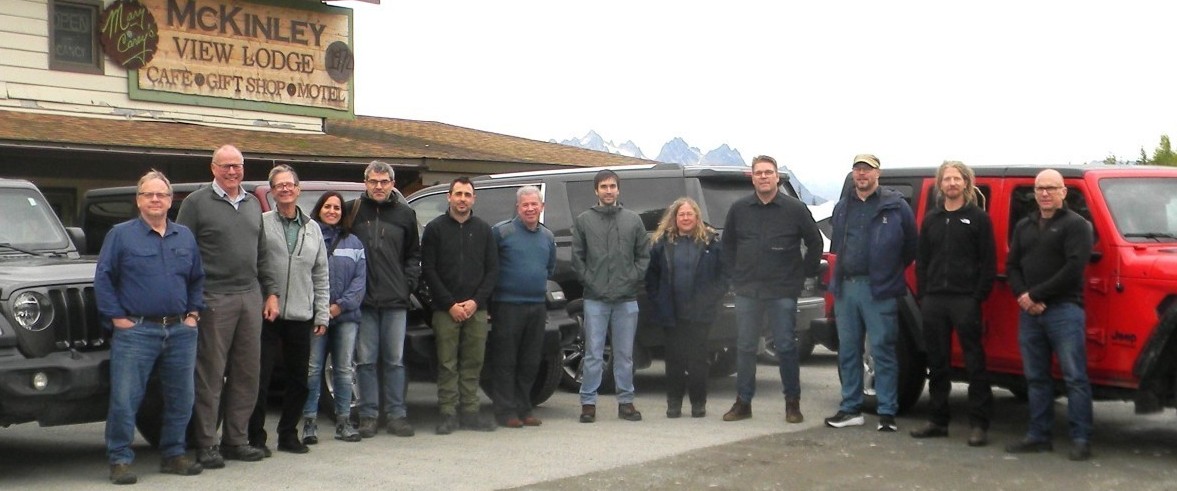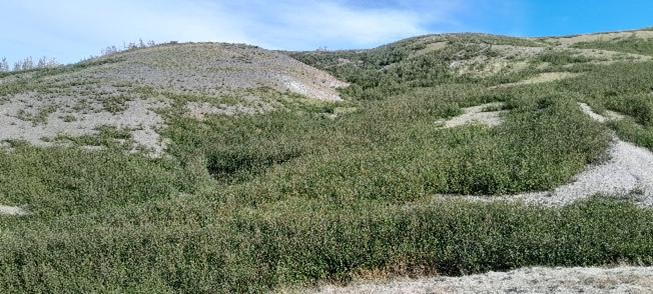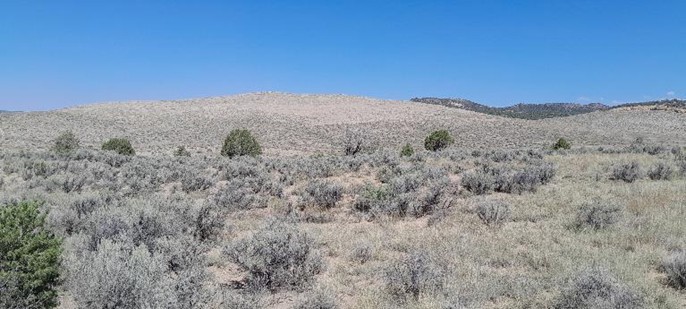
A group of 11 participants from around the world joined Ncholas Bugosh on a tour of several GeoFluv Reclamation sites in the USA. The aim of the trip was to visit different regions within the USA (Arctic and Desert areas) where the GeoFluv method had been applied to reclaim disturbed land. The sites visited ranged in size (from 10’s – 100’s of hectares) were based on completely different geology and subject to completely different weather conditions.
First stop Alaska – where Roger Allely from the Alaska Dept of Natural Resources took us to 3 sites that had been reclaimed in the Healy region of Alaska. From the 1920s through the 1960s large scale surface coal mining occurred in Healy Valley, Alaska, along the south side of Healy Creek. After the economical coal was mined out, the strip pits were abandoned without being reclaimed. This left behind well over 300 acres of disturbed lands in seven individual pits, comprising a series of dangerous highwalls, steep footwalls, and out-of-pit spoil piles.

Our tour took us to three different sites (Hydraulic Pit, Vitro Pit and Cripple Creek Pit) each in different stages of the reclamation. The Hydraulic Pit that was constructed in 2019 was well covered in native vegetation, while the more recent sites were in the process of establishing vegetation cover.
These areas were relatively small (10’s of hectares) but were located in steep country with highly erodible soils.
The work undertaken at the Hydraulic Pit won the Alaskan Department of Natural Resources’ Mine Reclamation program high praise from state legislative leaders at the Resource Development Council annual conference in 2019.

The Study Tour then took us to the desert areas of New Mexico (near Farmington) – where three large coal mines had implanted the GeoFluv Method about 20-25 years ago.
This is a desert area, located in highly sodic soils – that are subject to severe intermittent storms. The landscape is covered with large “Arroyos” and drainage gullies.
The first site visited was the Navajo Mine – based in the Navajo Nation. Navajo mine is a Mine Mouth thermal coal mine that fuels the “Four Corners Power Plant”.
The Mine Management at Navajo explained how the mine has been implementing the GeoFluv method for decades over 100’s of hectares. We visited a number of regions around the mind – at different stages of being reclaimed. Some areas were currently being built, some areas were establishing vegetation while other areas had completed the reclamation process and were had the Bonds released.
In September 2024, Navajo mine received an Office of Surface Mining Award for being a “Good Neighbour” and restoring an eagle habitat.
Another visit was them made to the La Plata Mine. This mine is no longer operating – and in the final stages of Bond Release. We were able to inspect the landforms that were designed and built and observe how they are operating. We met with a Mine Regulator from New Mexico Regulator who praised the performance of the La Plata final landform, and explained how it had received good community acceptance.
All participants agreed that this was a very interesting and informative trip that showed how the GeoFluv method had been applied in different regions under different climatic conditions to create stable, functional, natural looking reclamation landforms.


